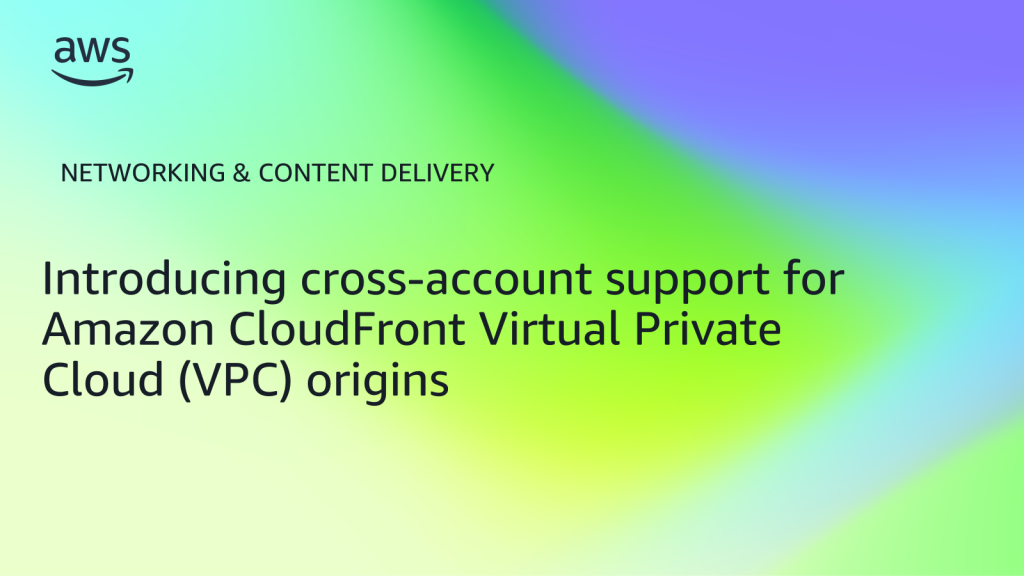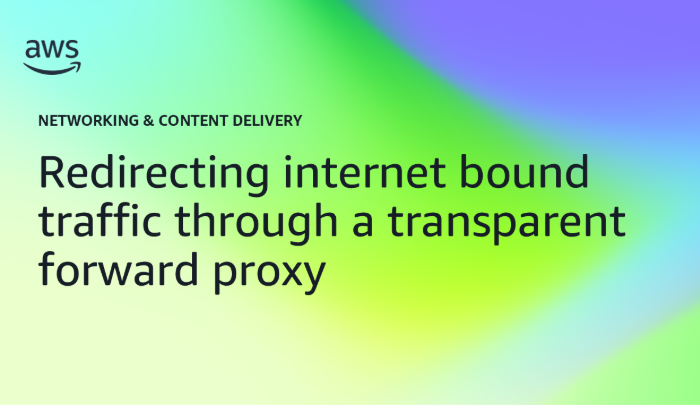Networking & Content Delivery
Category: Compute
Introducing cross-account support for Amazon CloudFront Virtual Private Cloud (VPC) origins
In November 2024, Amazon CloudFront introduced CloudFront Virtual Private Cloud (VPC) origins, a security feature that allowed customers to deliver content from applications hosted in private subnets. In addition, we are now introducing cross-account support for Amazon CloudFront VPC origins, enabling network traffic flow between Amazon CloudFront and Application Load Balancers (ALBs), Network Load Balancers […]
Introducing URL and host header rewrite with AWS Application Load Balancers
Today we’re announcing the general availability of rewriting URLs and host headers natively on Amazon Web Services (AWS) Application Load Balancers (ALB). You can use this new feature to implement regex matches based on request parameters and rewrite both host headers and URLs before routing to your targets. Operating at Layer 7 (application layer) of […]
Building Resilient Multi-cluster Applications with Amazon EKS, Part 1: Implementing Cross-cluster Load Balancing with NLB
This three-part series explores design patterns and strategies to enhance application resiliency through multi-cluster deployment on Amazon Elastic Kubernetes Service (EKS). In this first part, we address a common challenge when using a Network Load Balancer (NLB) in multi-cluster environments. Organizations increasingly rely on Kubernetes—whether through Amazon Elastic Kubernetes Service (EKS) or self-managed clusters on […]
Redirecting internet bound traffic through a transparent forward proxy
Centralized egress is the principle of using a single, common inspection point for all network traffic destined for the internet. This approach is beneficial from a security perspective because it limits exposure to externally accessible malicious resources, such as malware command and control (C&C) infrastructure. This inspection is generally done by a firewall like AWS […]
Using CloudWatch Alarms and Lambda to catch exceptional traffic
Have you ever wondered, “Why did I have this sudden increase in network traffic?” AWS Transit Gateway Flow Logs are a great resource for answering this, but running them continuously can incur processing and storage costs that you don’t need. However, if Flow Logs are run on demand, the traffic anomaly may have already passed […]
Simplify ALB’s public IP address assignment with VPC IPAM
Application Load Balancer (ALB) operates at layer-7 of the OSI model and allows you to load balance HTTP and HTTPS requests to its backend targets. In March 2025, we launched ALB and Amazon VPC IP Address Manager (IPAM) integration that allows you to use predictable IP address blocks for your internet-facing ALBs. This feature helps […]
Exploring Data Transfer Costs for AWS Network Load Balancers
In this post, we explore how Amazon Elastic Compute Cloud (Amazon EC2) data transfer costs apply to the communication between Network Load Balancer (NLB), clients, and targets in multiple scenarios, to help you optimize data transfer costs on Amazon Web Services (AWS). For Classic and Application load balancers, visit our post, Exploring Data Transfer Costs […]
Encrypt DNS queries using DNS-over-HTTPS (DoH) with Amazon Route 53 Resolver Endpoints
Customers frequently use on-premises DNS infrastructure to resolve DNS queries for internal domains. In 2018, we announced Amazon Route 53 Resolver endpoints, which enable customers to integrate Route 53 with their on-premises DNS infrastructure for hybrid DNS resolution. In 2023, we improved this integration by providing customers the ability to encrypt DNS queries and responses […]
Demystifying AWS Data Transfer services to build secure and reliable applications
For cloud users, evaluating data transfer services can be complex, especially when the internal engineering that manages security and delivers high availability and low latency is often abstracted. We are starting a series of posts intended to demystify AWS Data Transfer services and to clarify exactly what Amazon Web Services (AWS) users get when they […]
Using cross-zone load balancing with zonal shift
Today, we’re announcing Amazon Application Recovery Controller (ARC) zonal shift support for Application Load Balancers (ALB) with cross-zone load balancing enabled. This complements the support for Network Load Balancers (NLB) using cross-zone load balancing we announced previously. Now you can use zonal shift with both NLBs and ALBs, with or without cross-zone load balancing configured, […]









